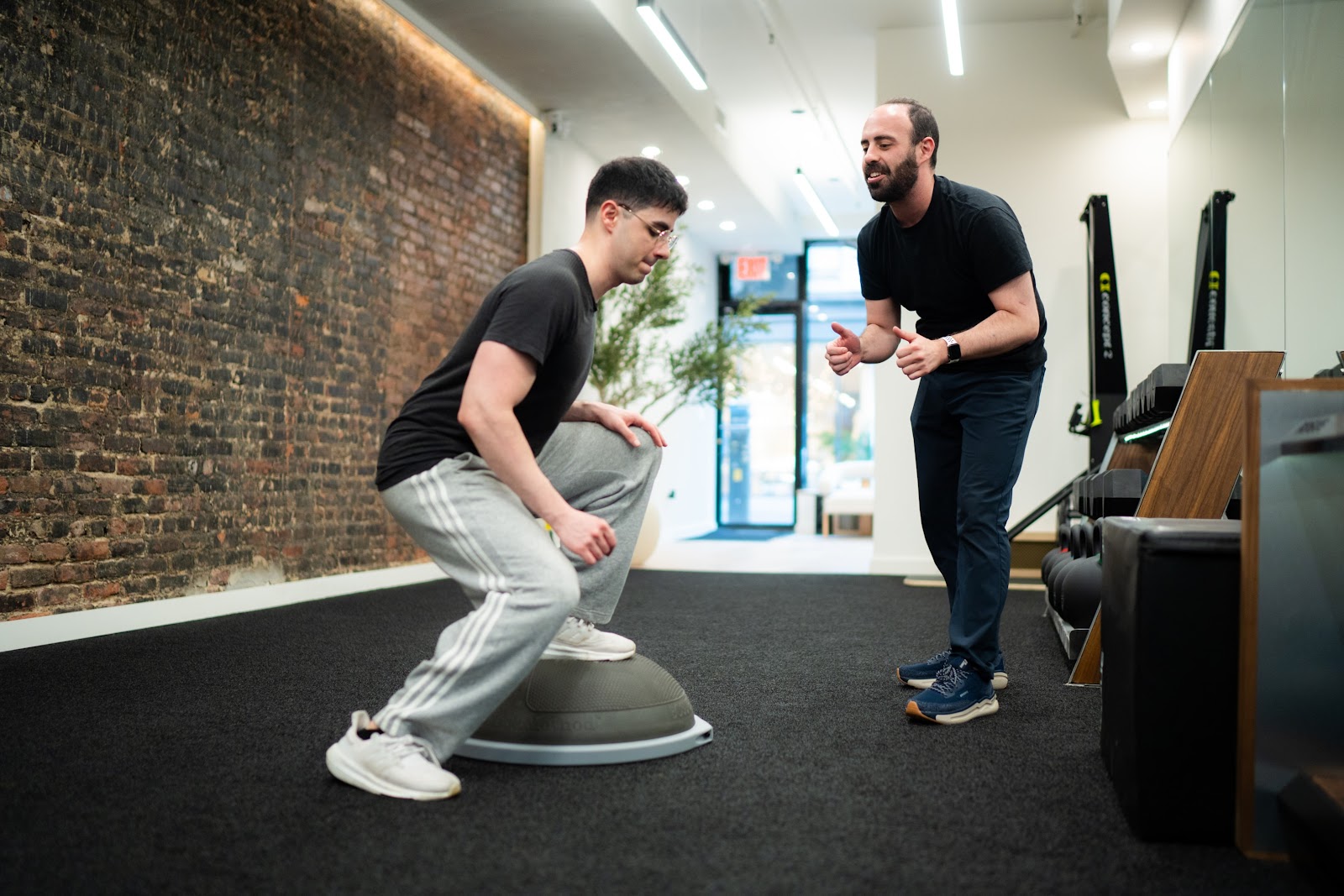Urinary issues can significantly affect your quality of life—causing discomfort, emotional distress, and disruption to daily routines. As a doctor of physical therapy specializing in pelvic health, I’ve worked with many individuals facing challenges such as urinary incontinence, urgency, and bladder retention. The good news is that these issues can be effectively managed or even resolved with the right strategies and support.
In this guide, we’ll explore the most common urinary concerns and provide expert-backed advice on improving bladder control, reducing symptoms, and regaining confidence.
What Are Urinary Issues?
Urinary issues refer to any dysfunction involving the bladder, urethra, or pelvic floor that impacts the normal process of urination. These problems may include:
- Urinary incontinence (leakage of urine)
- Frequent urination or urgency
- Urinary retention (difficulty fully emptying the bladder)
- Painful urination
- Overactive bladder (OAB)
Bladder problems can result from dysfunction in the bladder muscles or sphincter muscles, which control the release of urine.
These conditions can arise from various factors, such as weakened pelvic floor muscles, aging, hormonal changes, infections, neurological disorders, or lifestyle habits. Issues with the prostate gland can also contribute to urinary issues, especially in men. Understanding the root cause is key to finding effective treatment.
Frequent Urination and Overactive Bladder: What You Should Know
Frequent urination or the sudden urge to urinate—even when the bladder isn’t full—can be frustrating and disruptive. This is commonly associated with overactive bladder, a condition characterized by involuntary bladder contractions. A strong urge to urinate can be triggered by nerve signals that cause these involuntary contractions, leading to sudden and intense sensations of needing to urinate.
Management Tips:
- Bladder Training: Gradually increase the time between bathroom visits to help your bladder retain more urine.
- Scheduled Voiding: Set specific times to urinate to retrain bladder habits.
- Avoid Bladder Irritants: Reduce intake of caffeine, alcohol, and artificial sweeteners.
Enhancing Bladder Control with Pelvic Floor Strengthening
Strong pelvic floor muscles are essential for maintaining urinary continence. Sphincter muscles also play a crucial role in controlling the release of urine and work in coordination with the pelvic floor. If these muscles become weak—often due to childbirth, aging, or surgery—it can lead to leaks or urgency.
Solution:
- Pelvic Floor Exercises (Kegels): These targeted exercises strengthen the muscles that support the bladder and urethra. A pelvic floor physical therapist can guide you through proper technique to ensure effectiveness.
- Biofeedback and Electrical Stimulation: These advanced therapies can enhance muscle awareness and control.
Addressing Painful Urination: Causes and Solutions
Experiencing discomfort or a burning sensation during urination may be a sign of infection, inflammation, or pelvic floor dysfunction. Bladder spasms, which can occur due to prostate problems, nerve damage, or as a side effect of treatments like surgery or radiation for prostate cancer, can also contribute to discomfort or pain during urination. Painful urination should never be ignored, especially if it is recurring.
Common Causes:
- Urinary Tract Infections (UTIs)
- Interstitial Cystitis (Bladder Pain Syndrome)
- Vaginal atrophy or hormonal changes
- Pelvic floor muscle tension
- Bladder spasms
Recommended Approach:
- Seek Medical Evaluation to rule out infections or underlying conditions.
- Pelvic Floor Physical Therapy can be effective for musculoskeletal causes of urinary pain.
How Hydration and Drinking Habits Affect Urinary Health
Hydration plays a crucial role in maintaining bladder health. However, how much and what you drink matters.
For those with prostate health concerns, it’s important to be able to fully empty your bladder, as conditions like benign prostatic hyperplasia (BPH) or prostate cancer treatments can make this more difficult and may lead to urinary retention.
Guidelines:
- Drink 6–8 glasses of water daily, spaced throughout the day.
- Reduce or eliminate bladder irritants such as caffeinated beverages, alcohol, and carbonated drinks.
- Avoid excessive fluid intake in the evening to reduce nighttime urination (nocturia).
Maintaining a bladder diary can help track your fluid intake, urinary patterns, and triggers.
The Impact of Diet and Health Changes on Urinary Function
Significant life changes—including menopause, weight gain, and aging—can impact urinary health. Prostate problems, including prostate cancer, can develop with age and may impact urinary function.
Hormonal shifts, particularly a decrease in estrogen, can weaken the bladder lining and pelvic floor support. Prostate problems can also lead to changes in the urine stream, such as slowing or difficulty starting.
The bladder is about the size of a grapefruit when full, but its capacity and function can be affected by health changes.
Nutrition Tips:
- Avoid spicy, acidic, and artificial sweeteners that may irritate the bladder.
- Increase fiber intake to prevent constipation, which adds pressure to the bladder and pelvic floor.
- Consider supplements or dietary changes recommended by your healthcare provider for hormonal balance.
Types of Urinary Incontinence: Understanding the Differences
Urinary incontinence is a widespread health problem that can lead to unexpected urine leakage and disrupt daily life. To manage urinary incontinence effectively, it’s important to recognize that not all cases are the same—there are several distinct types, each with its own causes and symptoms.
Stress incontinence occurs when physical activity—such as coughing, sneezing, laughing, or lifting—puts extra pressure on the bladder. This pressure can cause urine leaks, especially if the pelvic floor muscles are weakened. Many people notice that stress incontinence occurs during exercise or even simple movements.
Urge incontinence is marked by a sudden, intense urge to urinate, often followed by leaking urine before you can reach the bathroom. This type is sometimes called “overactive bladder” and is caused by involuntary contractions of the bladder muscle, making it difficult to control the urge to urinate.
Overflow incontinence happens when the bladder doesn’t empty completely, leading to frequent or constant dribbling of urine. This can result from a bladder problem, nerve damage, or an obstruction in the urinary tract, making it hard to pass urine fully.
Functional incontinence is different in that it’s not caused by a direct problem with the bladder or urinary tract. Instead, it occurs when a health problem—such as arthritis, mobility issues, or a urinary tract infection—makes it difficult to get to the bathroom in time, resulting in urine leakage.
Understanding which type of urinary incontinence you’re experiencing is the first step toward finding the right solution and regaining confidence in your bladder control.
Why It Matters for Your Treatment Plan:
Identifying the specific type of urinary incontinence you have is essential for creating a treatment plan that truly works for you. When you seek medical advice for urinary symptoms, your healthcare provider will start with a thorough physical exam and a review of your medical history. They may also recommend tests like urinalysis or urodynamic studies to pinpoint the cause of your bladder control problems.
Once the underlying issue is identified—whether it’s an enlarged prostate, urinary tract infections, or another health problem—your provider can suggest targeted treatment options. These may include lifestyle changes such as pelvic floor exercises to strengthen the pelvic floor, dietary adjustments to avoid processed foods and bladder irritants, and bladder training to improve bladder control. In some cases, medications or surgical procedures may be necessary, especially if you have conditions like benign prostatic hyperplasia or persistent urinary tract infections.
Your drinking habits also play a significant role in urinary health. Staying hydrated, but not overdoing it, can help prevent kidney disease and reduce urinary urgency. Managing blood pressure and maintaining a healthy diet are important for overall urinary system function and can help prevent future urinary problems.
If you notice symptoms like painful urination, frequent urination, or sudden urinary urgency, don’t hesitate to seek medical advice. Early intervention can make a big difference in managing urinary incontinence and improving your quality of life. Remember, with the right support and a personalized treatment plan, you can take control of your bladder health and feel confident again.
Treatment Options for Managing Urinary Issues
If lifestyle changes alone aren’t enough, a range of professional treatments are available to support bladder health:
Some advanced treatments, such as neuromodulation therapy, work by modulating nerve signals to improve bladder control.
Medical Options:
- Medications for urgency and overactive bladder
- Surgical interventions for severe incontinence or structural issues
- Incontinence products to manage symptoms discreetly
Pelvic Floor Physical Therapy:
This specialized therapy addresses the root causes of urinary dysfunction through personalized exercise programs, manual therapy, education, and behavior modifications. Many patients experience significant improvement in bladder control and symptom relief after just a few sessions.
Take Control of Your Bladder Health Today
Urinary issues are more common than you think, and you don’t have to face them alone. With the right knowledge and expert support, it’s entirely possible to regain control and improve your quality of life.
If you’re ready to take the next step in managing your urinary health, visit www.pelvis.nyc to schedule a consultation with a pelvic floor specialist.


